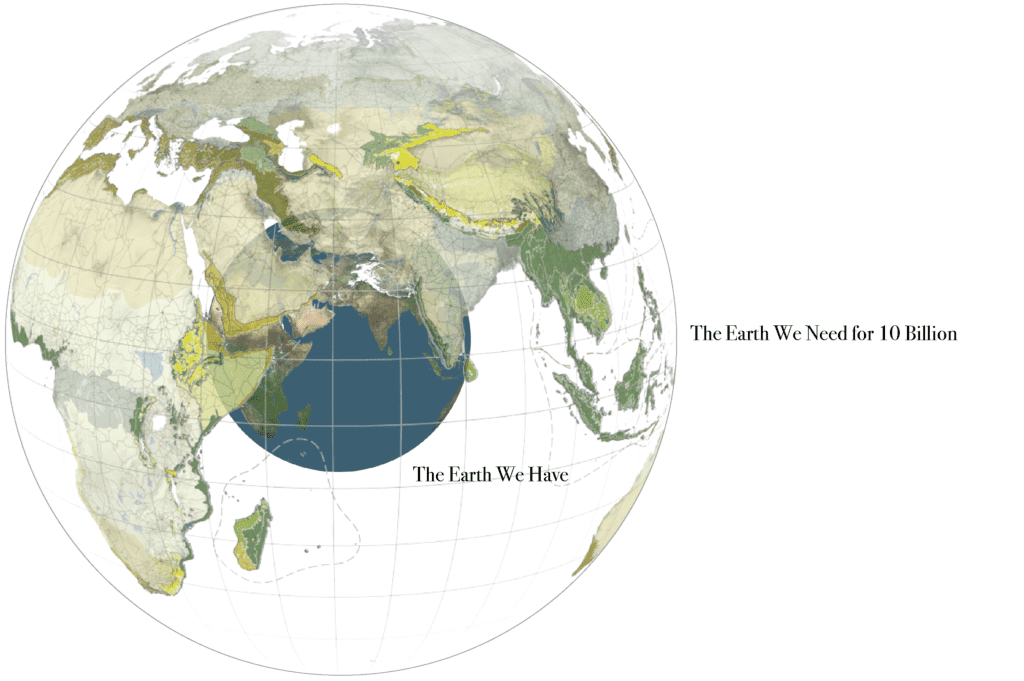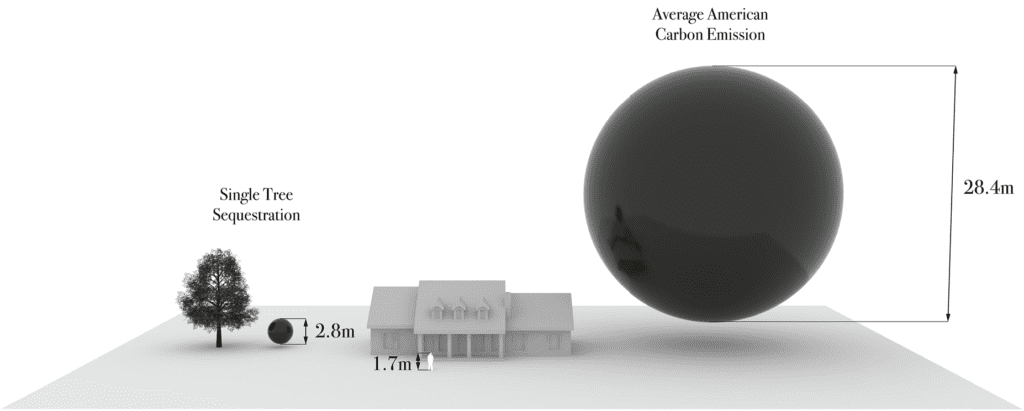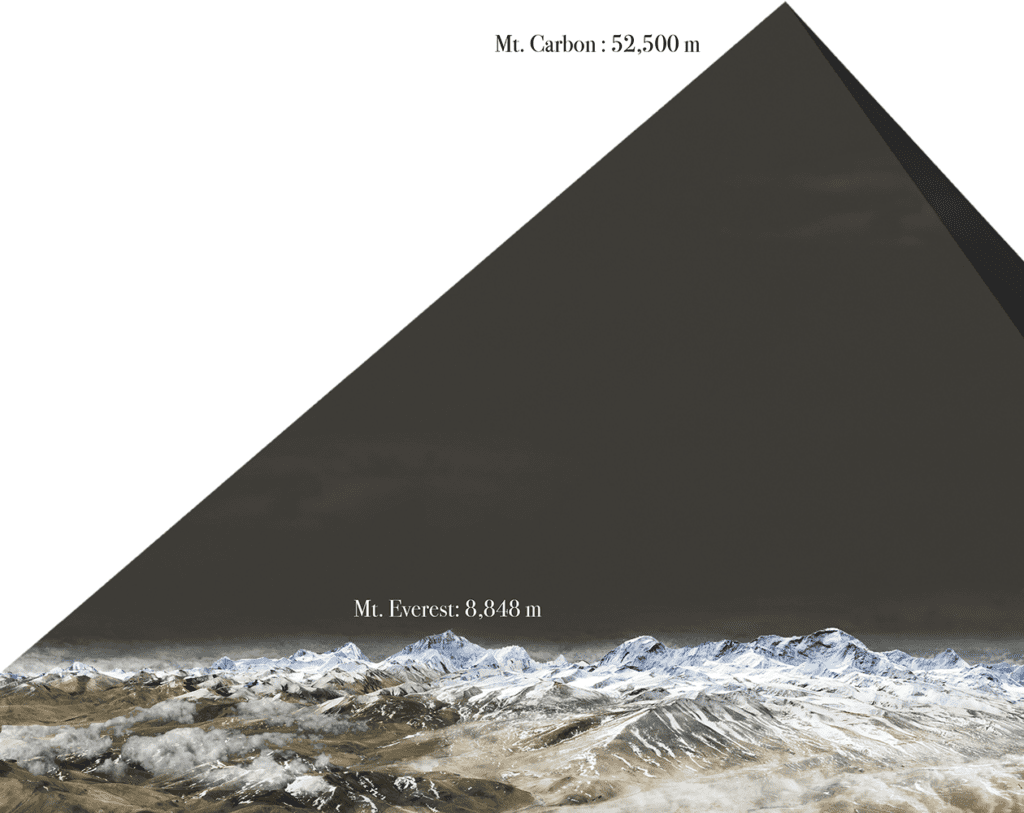Often, it’s hard to visualise your impact on the world, it seems like an abstract concept. We are told that are using too many resources and emitting too much CO2 but it’s difficult to say how much we are creating individually. In this time period sustainability is very important. Already, we are pushing our planet to the limit. There are currently 7.5 billion people on the planet and the global population is estimated rise to 10 or 11 billion people in 2100. Developing countries are industrialising and everyone wants to live in comfort. However, it is impossible for everyone in the world to live the way people do in wealthy countries.
The Atlas for the End of the World created infographics to try to make our impact on the world more concrete, on an individual and global level. They took the American standard, which many parts of the world aspire to, and modelled ecologically footprints individually and for a hypothetical 2100 global population of 10 billion people.
1. One person’s footprint

As you buy clothes and food or go on an airplane you may not be aware of your impact on the environment in concrete terms. But crops need land to grow, animals need food and space to grow, fabric needs to be made, turned into clothes, and exported. Each person that lives like an American needs the equivalent of 8 sports fields to supply their needs. And of course this land isn’t just one giant field, it is split up in little pieces all over the world.
2. Global footprint

So we saw what the footprint of one person looks like, but what if everyone in the planet lives like that? Currently, there is a huge disparity between wealthy and poor nations and those in poorer areas don’t use as many resources but the way things are heading they are catching up. Ten billion Americans will create a footprint of at least 82,000,000,000 global hectares (gha). This is 670% of the Earth’s current biological capacity of 12,243,512,050 gha. We would need almost seven earths to support ourselves. The current footprint is already above capacity at 20,114,439,677 gha.
3. One person’s carbon

An average American produces 21.55 metric tons (47,510 lbs) of CO2 equivalents in one year. However, an average tree can only take in 0.022 metric tons (48 lbs.) per year. To make that even clearer, one person would need 980 trees to take in all of the carbon that they emit. The charcoal spheres represent the volumes of CO2 at normal temperature and atmosphere (NTP).
4. Global carbon

Did you think mount Everest was massive? The amount of CO2 that 10 billion people would emit would be about 6 times higher if it was shaped like a peak. They would produce 216 billion metric tons of CO2, a year, which is equal to a pyramid that has the same volume as 48 million Great Pyramids of Giza. There would have to be 9.8 trillion trees on earth to absorb all of that CO2. Currently, there are approximately 3 trillion trees on earth. The pyramid represents the volumes of CO2 at normal temperature and atmosphere (NTP).
The takeaway here is that we’re using more than we have, a problem that will be exacerbated by a larger population. We must seriously change our consumption so that we can live on the one planet that we have.
Was this helpful?



